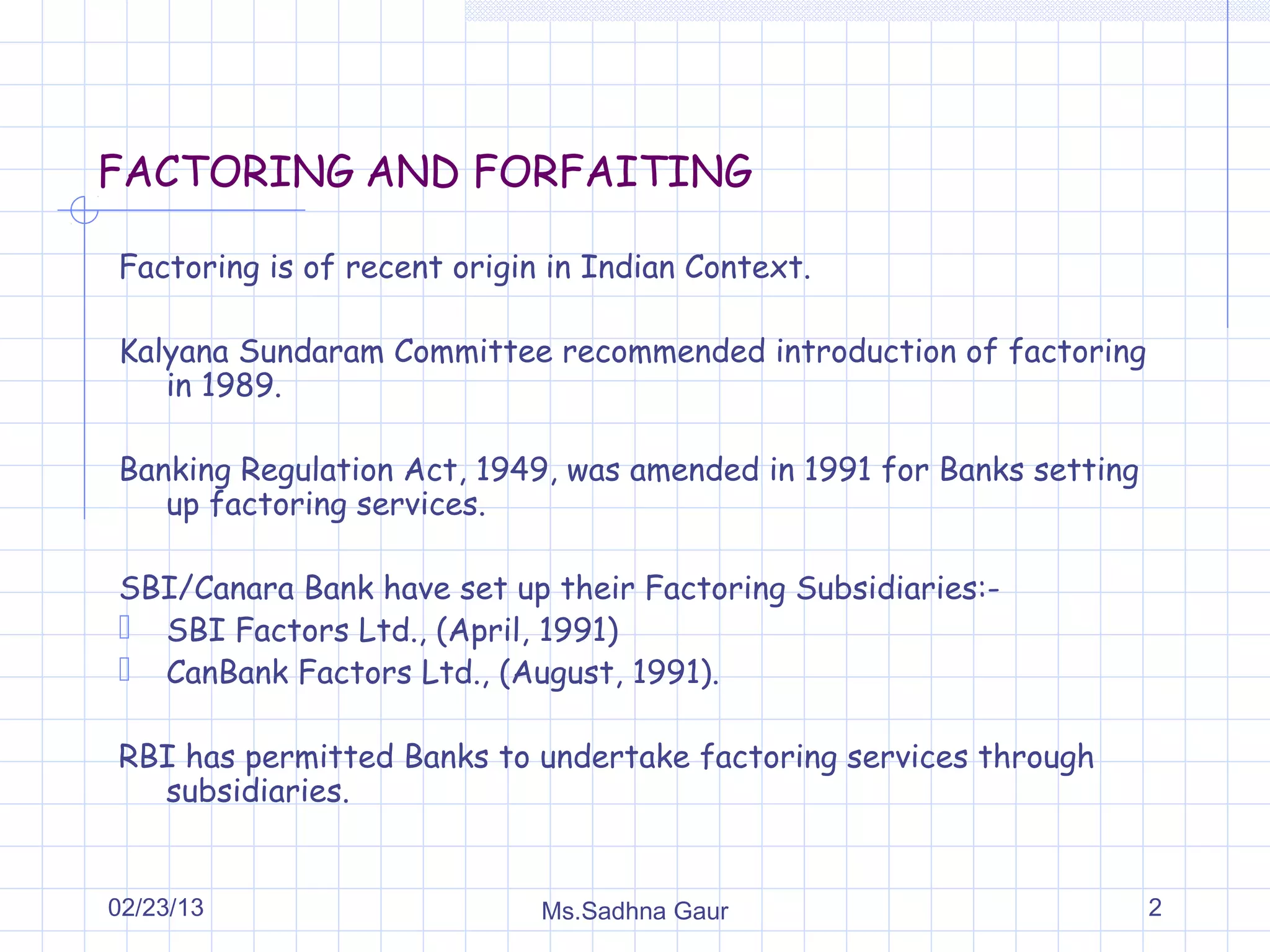The document discusses factoring and forfaiting. It defines factoring as the sale of book debts by a firm to a financial institution, where the factor pays for the debts as they are collected and provides immediate liquidity to the client. Forfaiting is described as the purchase by a financial intermediary of the export receivables of an exporter without recourse to the exporter, dealing specifically with receivables relating to deferred payment exports. The key differences between factoring, bill discounting, and forfaiting are outlined.

































